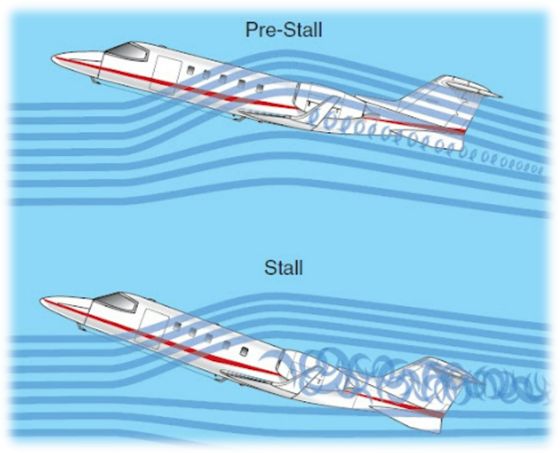Super stall, also known as “Deep stall”, is a critical aerodynamic condition that can occur in certain aircraft configurations, particularly in those with a T-tail design. This phenomenon arises when the aircraft’s angle of attack (AOA) is too high, causing the airflow over the wing to disrupt the airflow over horizontal stabilizer. This will reduce pitching ability of aircraft and as a result, the aircraft can become trapped in a stalled condition.
Super stall/Deep stall situations are extremely dangerous because traditional stall recovery techniques, such as lowering the nose to regain airflow over the wings, may be ineffective due to the disrupted airflow over the tail. Additionally, the aircraft may enter a deep stall at a high altitude, where recovery is more challenging due to reduced air density and available maneuvering space.

Stick Pusher to prevent Super Stall
Aircraft equipped with a T-tail design often incorporate a Stick Pusher system as a safety feature to help prevent the mainplane angle of attack from reaching values that could lead to a deep stall. The Stick Pusher is a mechanical or electronic system that automatically pushes the control stick or yoke forward when it detects that the aircraft is approaching a critical angle of attack.
When the Stick Pusher activates, it helps to reduce the aircraft’s angle of attack, thereby decreasing the risk of a deep stall. By pushing the nose of the aircraft down, the Stick Pusher helps to restore airflow over the wings, allowing the aircraft to regain lift and avoid entering a stalled condition.
The Stick Pusher system is designed to operate automatically and is typically triggered based on inputs from angle of attack sensors or other flight data sources. It provides an additional layer of protection against deep stall conditions, particularly in aircraft with T-tail configurations where traditional stall recovery techniques may be less effective.